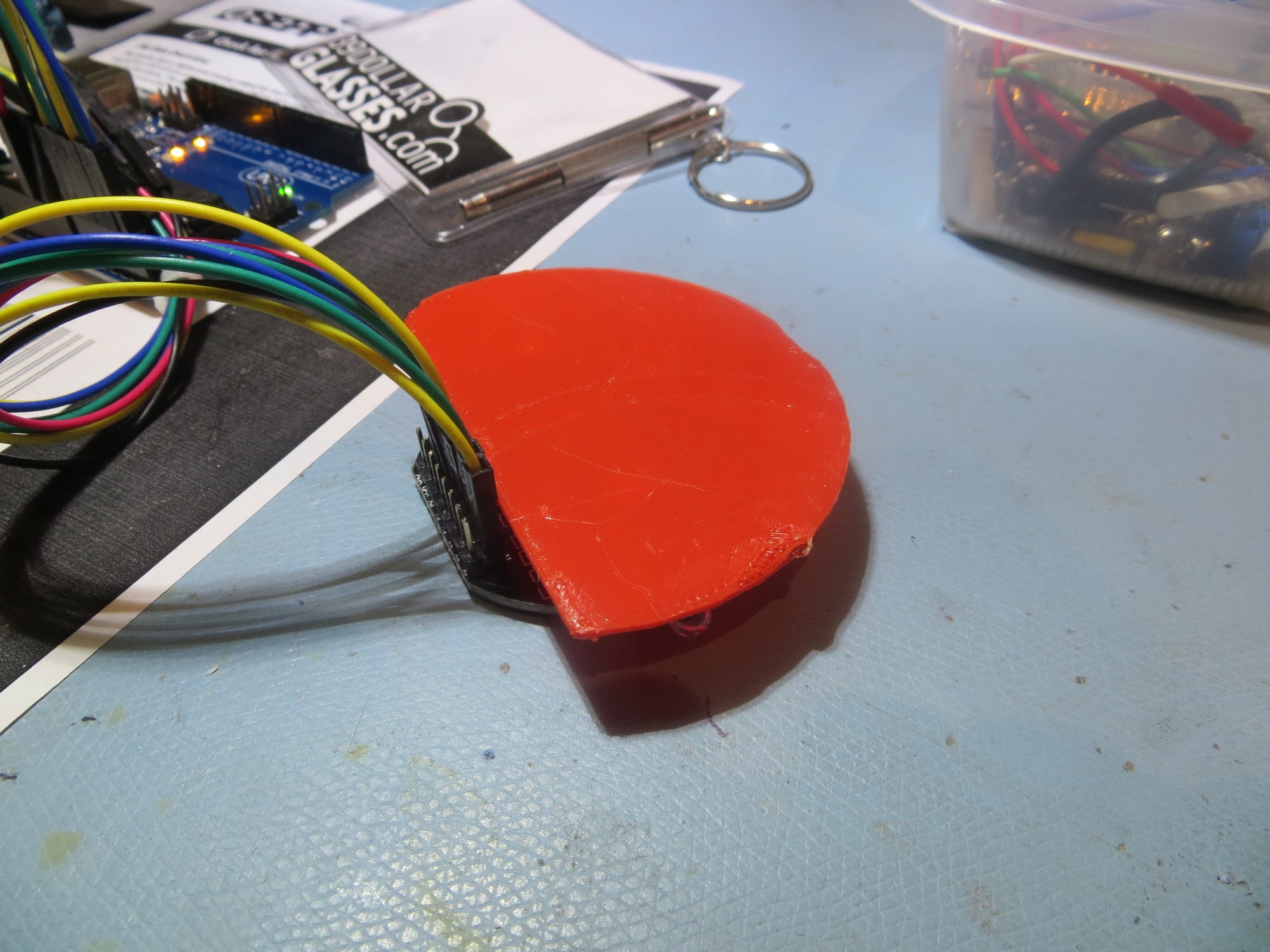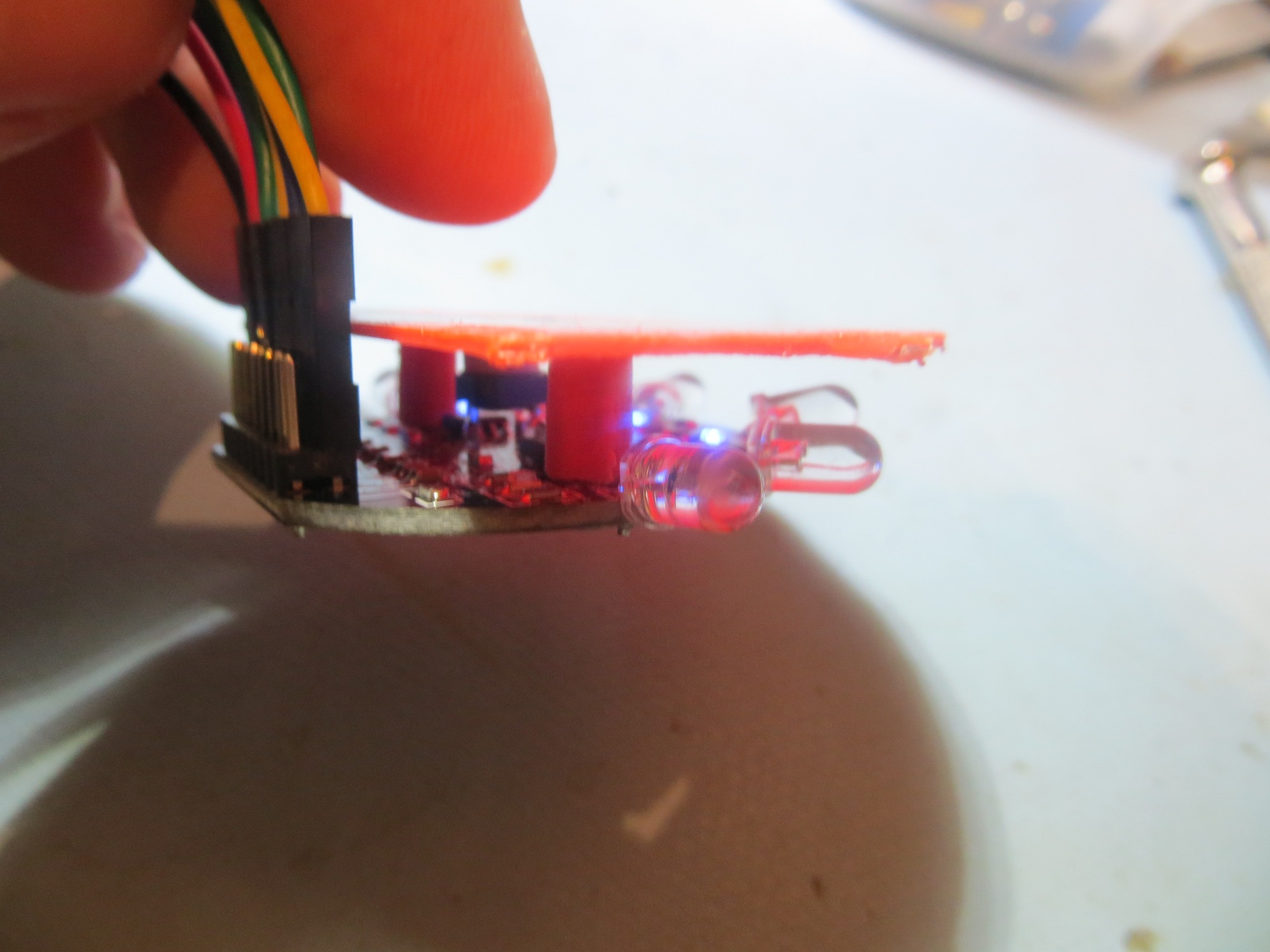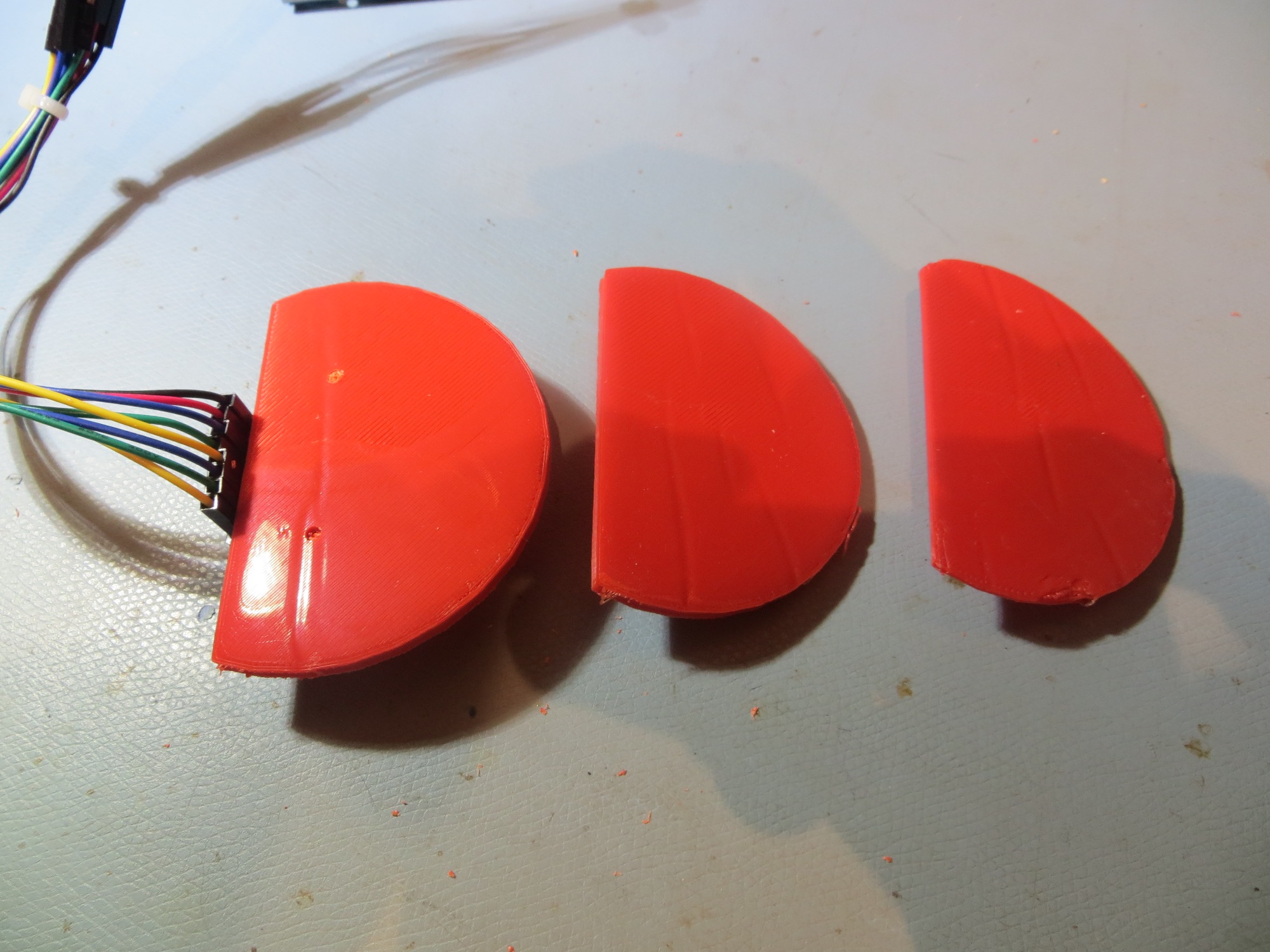Posted 28 October 2016
In my last post on this subject, I described the OSEPP IR Follower circuit I found at MicroCenter a few days ago, and my thoughts about incorporating it onto Wall-E2, my wall following robot. After a few tests, it became apparent that the OSEPP circuit is quite sensitive to IR, and in fact the LED track lighting in my lab puts out enough IR to swamp out the signal from my test IR emitter. So, I set about developing an ‘IR Shade’ to shield the detectors from elevated IR emitters (this turns out to be harder than I thought, due to IR multipath effects, but I digress).
So, my first attempt was a 3D printed ‘sunshade’ as shown below

IR Shade V1 – Top View: 1 mm thick, with approx 5 mm overhang

IR Shade V1 – Side View: 1 mm thick, with approx 5 mm overhang
This shade was 1mm thick, with about a 5 mm overhang on the IR detectors. The shade is supported via two posts that mate with mounting holes on the OSEPP board. When I tested this shade with my LED bench lamp, it basically didn’t do much. Apparently 1mm is nowhere near enough material :-(.
Next, I tried placing some black electrical tape on the shade, as shown below.

IR Shade V1 with black electrical tape – Top View
The black electrical tape helped significantly, which is how I found out about the IR multipath problem. Not only am I having to contend with blocking the direct path, reflections from nearby objects can also cause problems.
To address the direct path problem, I modified the shade design to be 3 mm thick, with 80% fill density vs the original 40%. Hopefully this will be enough to cancel out the direct path, leaving only the multipath issue. I don’t think there is much I can do about the multipath, other than assume that the field (i.e. the hallways in my house) won’t have that problem, as the lighting is mostly incandescent, and the ceilings are mostly 10 ft (3.3 m) away – we’ll see.

IR Shade V2. 3mm thickness, 80% fill
Even this one didn’t work as well as I’d hoped, so on to version 3 – with a larger overhang – about 8 mm. This one blocked all the direct path IR and most of the multipath as well. I’ll stick with this on for now, and move on to some steering tests.

The version 3 IR ‘sunshade’ with 7-8 mm overhang